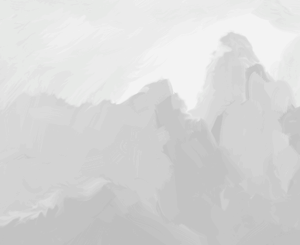
1889 — 1962
Mei Yiqi
Mei became president of Tsinghua University in Beijing in 1931. During the difficult years of the Anti-Japanese War, he was president of Southwest United University (a consortium of China's best universities) in Kunming, Yunnan.
Mei Yiqi, the son of a salt administration official, was born in Tianjin in 1889. After studying at Zhang Boling’s Middle School in Nanjing, he won a Boxer Indemnity scholarship in 1909. He studied electrical engineering at Worcester Polytechnic Institute in Worcester, Massachusetts. After becoming a Christian at a Y.M.C.A. camp in Northfield, Massachusetts in the summer of 1912, Mei was active in WPI’s Y.M.C.A. and the Chinese Students’ Christian Association. He was also a delegate to the Student Volunteer Convention in Kansas City in December 1913.
After returning to China, he served as executive director of the Tianjin Y.M.C.A. for one year before becoming a physics instructor at Tsinghua School in 1915. Mei returned to the United States in 1921-22 and took classes at the University of Chicago and at Columbia. He became the dean of faculty at Tsinghua in 1926 and then served as the director of the Chinese Educational Mission in Washington, D.C. from 1928-31.
Mei returned to Beijing to become president of Tsinghua in 1931. By 1935 Tsinghua offered ten graduate departments, more than one-third of all the graduate departments in China. Mei’s administrative skills included the ability to distinguish the essential and the willingness to delegate power. He also had infinite patience as a peacemaker and mediator.
During the thirties, the atmosphere on campus became charged by the Japanese encroachment. For two years Mei planned for the eventuality of a quick evacuation of Tsinghua. During the summer of 1937, most of Tsinghua’s students and teachers fled south, taking lab equipment and 500 cases of books with them. They first went to Changsha in Hunan province, but the Japanese bombed the city. The students and faculty then traveled southwest to Kunming, Yunnan’s provincial capitol.
Tsinghua refugees were joined with students and faculty fleeing from Beijing and Nankai Universities to form the Southwest Associated University or Lianda, which opened on May 4, 1938. Mei, the youngest of the three school presidents, became the chief administrator. He divided the top administrative posts among the faculty from the three schools. Tsinghua’s traditional rigorous teaching atmosphere was impeded by lack of books, paper, and equipment, and by almost daily air raids from 1939-45. However, the students benefited from being able to take classes from 179 specialists from the three campuses.
As the years wore on, the faculty’s feeling of being in exile increased. Others wearied of feeding their families on inflation-depleted incomes. In the midst of this, President Mei’s honesty, frugality, and generosity were highly respected: his family’s basic diet was rice seasoned with hot peppers, his transportation was his two legs, not the university car, and his wife sold her “victory cakes” through a local shop as a way to supplement their income.
After the end of the war many joined the millions of war refugees in the arduous trek back north to home. The Beijing campus had been looted and the campus into a hospital, bar, brothel, and stables for the Japanese army. After Mei oversaw the restoration of the campus, Tsinghua reopened on October 10, 1946 with 3000 students, more than double its pre-war size. Despite Mei’s calm but firm attitude toward students, the students boycotted classes thirteen times in two years, adding up to nearly two months of lost class time.
In December 1948 Mei flew out of Beijing with other intellectuals on a special plane sent in by the KTM. After going to a United Nations Educational Scientific and Cultural Organization (UNESCO) meeting in Paris, he spent the next six years in New York City conferring with the China Foundation about the Indemnity fund, which subsidized the almost 4,000 Chinese students and scholars stranded in the United States and donated books and journals to colleges and universities in Taiwan.
In 1955, he became the first president of the National Tsinghua University in Taiwan. Three years later he was appointed Minister of Education by the Nationalist government and served until he fell ill. He died in Taibei on May 19, 1962, at the age of 73.
Each year faculty and students at Tsinghua University on Taiwan pay respect to him at his grave in the Mei Garden. In 1989, on the hundredth anniversary of Mei’s birthday, Tsinghua in Beijing held a memorial where a bronze bust, contributed by overseas alumni of Tsinghua, was unveiled.
Sources
- Jan Stacey Bieler, "Patriots or Traitors"? A History of American Educated Chinese (M.E. Sharpe, 2004).
- Stacey Bieler, "Mei Yiqi: University President in Wartime," Carol Lee Hamrin, ed. with Stacey Bieler, Salt and Light: Lives of Faith that Shaped Modern China (Eugene, Oregon: Wipf and Stock Publishers, Pickwick Publications, 2008)
About the Author
Research Associate, Global China Center, Michigan, USA


